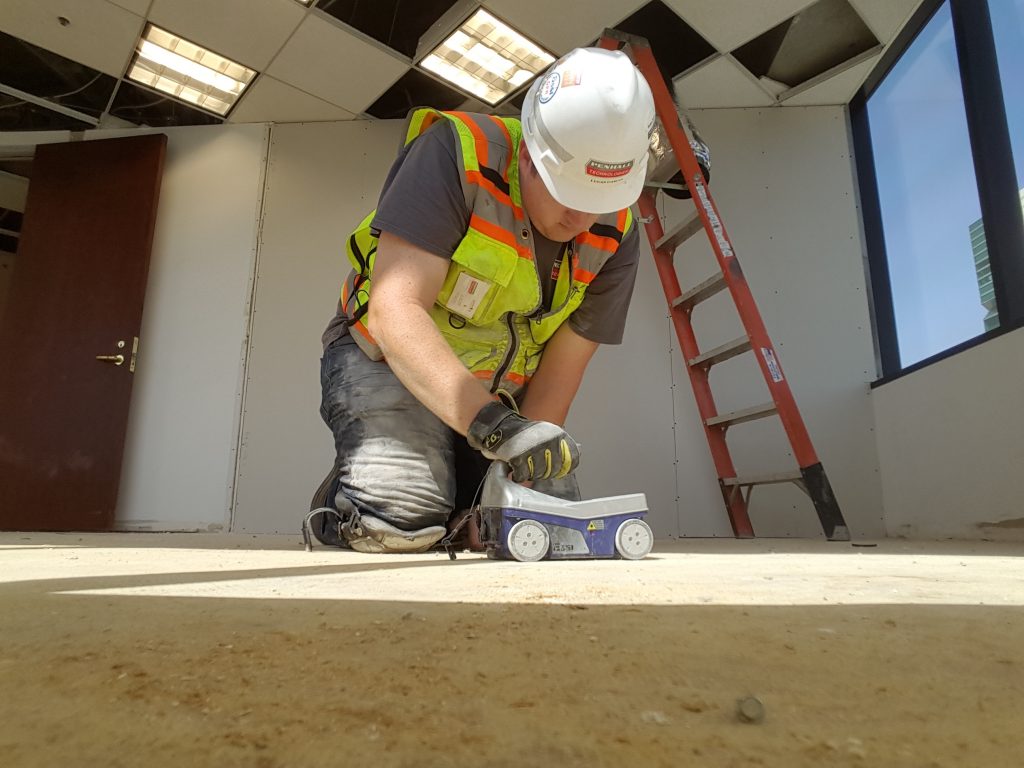Advanced Concrete Scanning Techniques: Ensuring Structural Honesty
Past the Surface: Leveraging Advanced Concrete Scanning Techniques for Unmatched Accuracy and Insight
Advanced concrete scanning techniques have actually emerged as essential tools in this pursuit, using a look below the surface area to reveal a globe of crucial understandings. By utilizing innovative technologies, experts can discover abnormalities, examine the condition of concrete frameworks, and make informed decisions that form the course of projects.
Importance of Advanced Concrete Scanning
The importance of using advanced concrete scanning methods lies in the unequaled precision they provide for identifying sub-surface anomalies and ensuring architectural integrity. By utilizing cutting-edge modern technologies such as ground-penetrating radar (GPR), electromagnetic induction, and advanced finder imaging, construction experts can dig underneath the surface of concrete frameworks with a degree of precision that far goes beyond standard evaluation techniques. Concrete Scanning. These methods make it possible for the recognition of surprise threats like rebar corrosion, voids, channels, or post-tension cords that could compromise the stability and security of a structure gradually
Moreover, progressed concrete scanning gives vital understandings into the overall problem of a concrete element without the need for intrusive actions, reducing the danger of triggering damage during the assessment process. The capacity to identify the specific area and depth of prospective problems enables for targeted repairs and maintenance, eventually extending the lifespan of the structure and enhancing its efficiency. Essentially, the significance of sophisticated concrete scanning can not be overemphasized in the realm of building and facilities maintenance, where precision and reliability are critical.
Kinds Of Cutting-Edge Technologies

Anomalies and Issue Detection

Along with GPR, concrete scanning strategies like thermography and impact-echo screening are additionally effective in identifying defects and abnormalities. Thermography utilizes infrared modern technology to determine variations in surface area temperature level, showing potential areas of worry such as delamination or dampness access. On the various other hand, impact-echo testing includes analyzing acoustic feedbacks to identify voids, splits, and various other problems within the concrete. By leveraging these innovative techniques, experts can proactively attend look here to architectural problems, guaranteeing the longevity and safety of concrete structures.
Assessing Concrete Problem
How can engineers accurately evaluate the problem of concrete structures to ensure their long life and safety and security? Examining the concrete condition is a critical facet of keeping facilities integrity. Different innovative concrete scanning methods are utilized for this function. Ground-penetrating radar (GPR) is commonly utilized to examine the interior structure of concrete, discovering voids, splits, and various other abnormalities that might compromise its toughness. Additionally, impact-echo screening can give understandings into the density and stability of concrete elements. Ultrasonic pulse velocity testing is another useful technique for reviewing concrete high quality by measuring the speed of sound waves with the material.
Moreover, aesthetic inspection remains a fundamental best site part of concrete problem analysis. Designers aesthetically check out the surface for indicators of wear and tear, such as spalling, fracturing, or staining. Integrating non-destructive screening techniques with aesthetic evaluations enables for a comprehensive evaluation of concrete problem, allowing designers to recognize prospective issues early on and implement prompt maintenance or repair services. By leveraging these innovative strategies, engineers can ensure the lasting longevity and safety and security of concrete structures.
Enhancing Decision-Making Processes
In the realm of framework management, optimizing decision-making procedures is crucial for ensuring the effective upkeep and long life of concrete frameworks. Boosted decision-making processes in concrete administration entail utilizing advanced scanning techniques to collect thorough information on the condition of structures. By leveraging technologies such as ground-penetrating radar and 3D imaging, stakeholders can make educated choices regarding reinforcement, substitute, or repair service approaches.
These progressed scanning techniques give vital insights right into the inner structure of concrete, identifying prospective concerns such as gaps, fractures, or deterioration that may not show up on the surface. This level of comprehensive information enables proactive upkeep planning, minimizing the danger of structural failings and raising the general life expectancy of concrete structures.
Furthermore, by incorporating electronic documentation and evaluation tools right into the decision-making procedure, stakeholders can track the advancement of concrete conditions over time, making it possible for predictive upkeep approaches and optimizing source allowance. Inevitably, the assimilation of advanced concrete scanning methods improves decision-making procedures by offering unrivaled precision, understanding, and performance in facilities administration.
Verdict
Finally, advanced concrete scanning methods use unmatched accuracy and understanding in finding anomalies, flaws, and analyzing the problem of concrete frameworks. By leveraging advanced technologies, decision-making processes can be boosted, leading to even more reliable and educated remedies for keeping and repairing concrete framework. These strategies play an essential duty in making sure the safety and longevity of concrete structures, making them a vital tool in the field of construction and design.
Furthermore, progressed concrete scanning try here provides indispensable insights into the total condition of a concrete element without the demand for intrusive measures, decreasing the risk of causing damage during the evaluation procedure - Concrete Scanning. An additional ingenious technology is 3D X-ray scanning, which provides comprehensive images of the inner framework of concrete, providing beneficial information without the need for harmful testing. Furthermore, Concrete Cover Meters are utilized to determine the density of concrete cover over reinforcement bars properly. Improved decision-making processes in concrete management involve using sophisticated scanning strategies to collect comprehensive information on the problem of structures.In final thought, progressed concrete scanning techniques use unrivaled precision and insight in discovering abnormalities, problems, and examining the problem of concrete frameworks